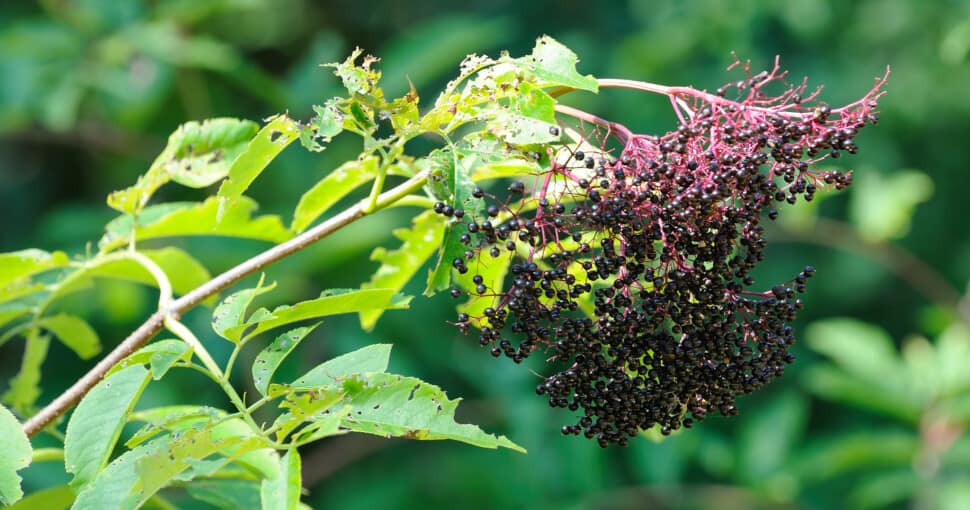The red or purplish-black drupe-shaped fruit of the elderberry makes a star ingredient for jelly or pie. With a current record of around 200 elderberry varieties, this small multi-stemmed tree or large shrub plant blooms fragrant creamy-white flowers perfect for an edible garden that’s open to attracting butterflies.
Contents
The American black elderberry is one of the most prevalent variations of the elder plant. Most people think of this common elder plant when referencing elderberry species. This deciduous North American woody plant can appear as a small tree that can grow to a height of 5–12 feet with 6–10 feet of width.
Like many elders, you can spot this elder plant from the white flowers that densely grow and cluster in the summer. As summer comes to a close and fall begins, the common elderberry’s signature purplish-black drupes appear in a way that seems to descend out from the plant.
The botanical world is filled with innumerable helpful and tasty wonders, with a fraction of that represented by the elderberry. With such variety, a couple of doppelgängers is an inevitable reality. You shouldn’t confuse a plant for elderberry kin just because it flowers white or tan and stands 5 to 20 feet tall.
1. Aralia Spinosa
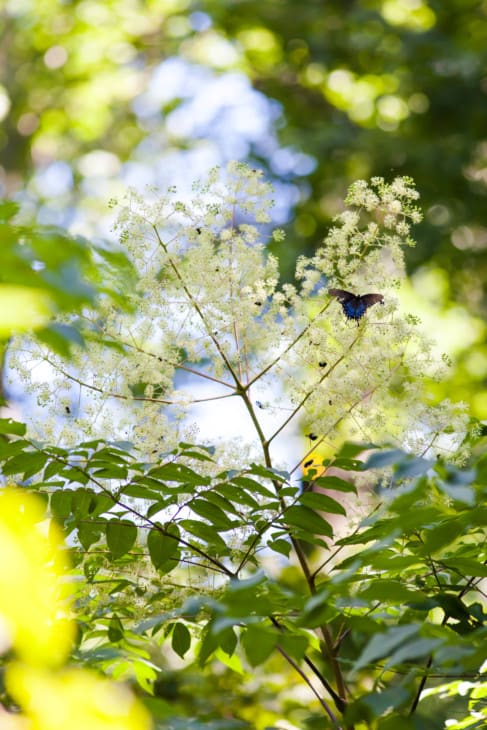
Aralia Spinosa appears to be the American elderberry’s devious cousin and has rightfully earned its common name, devil’s walking stick. Like the American elderberry, this plant has dark purple fruit clusters descending from bright burgundy stems.
They grow in the same environments, mature to similar measurements, and flower at similar times as American elderberries. The best route to distinguish them from the American elderberry is by looking for the thorns on the devil’s walking stick, as common elderberries have mostly smooth stems.
There are also little tell signs like the missing fine serrations on the aralia Spinosa leaves which you often find on common elder plants. This plant has yet to enjoy a similar level of research as its cousin and could potentially be toxic.
2. Cornus Amomum
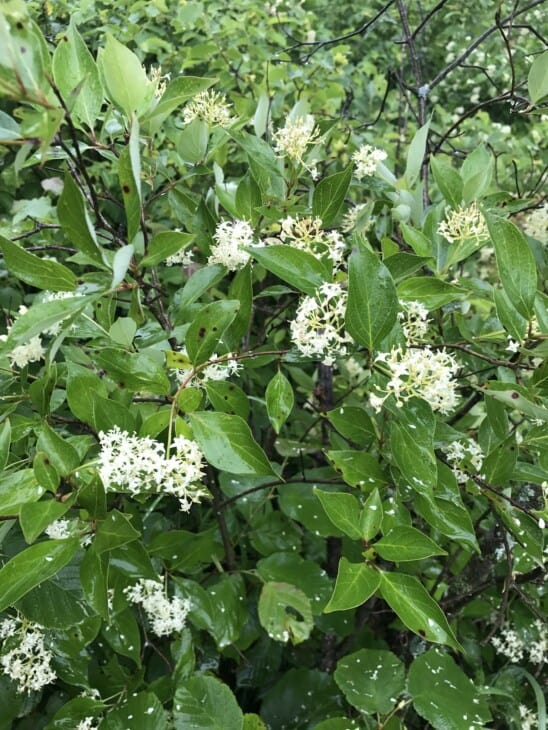
Silky dogwood is an open and round medium-sized shrub that blooms in creamy-white clusters in Spring and bears dark blue drupes in Summer.
As implied by its name, it spots short silky hairs on its twigs and both sides of its leaves. The green elliptical leaves grow to 1 to 3 inches long, much smaller than the 3 to 6 inches of the American elder. The width is about the same, but the silky dogwood has hairs present, whereas elders usually don’t.
You can differentiate it from elder plants from its smooth, gray, and thin bark as opposed to one that’s hard, brown, and grows to look more like the bark of a tree. The height of pale dogwood leans more toward the American elder at 6 to 12 feet.
3. Cornus Sericea
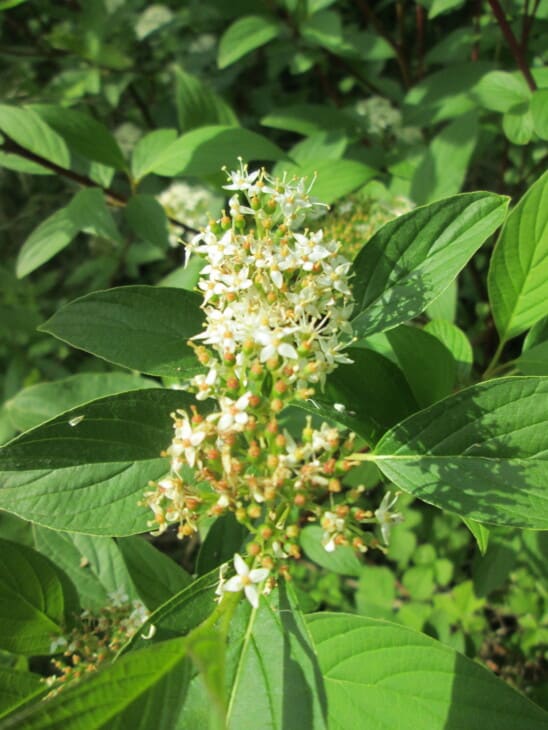
Red osier dogwood has bright red stems and twigs, making their 6-9 feet height stand out more during winter. They also have a flat-topped creamy-white cluster of flowers and white berries with shades of blue that bloom toward the end of Summer and into the beginning of Fall. The berries are edible with a sour taste.
Also known as the American dogwood, this plant’s green and oval-shaped leaves are similar in size to elders, but they have hairs present on them. Another characteristic that trips people up is that they spot a smooth stem in colors familiar to the elder plant’s stem.
4. Cicuta Maculata
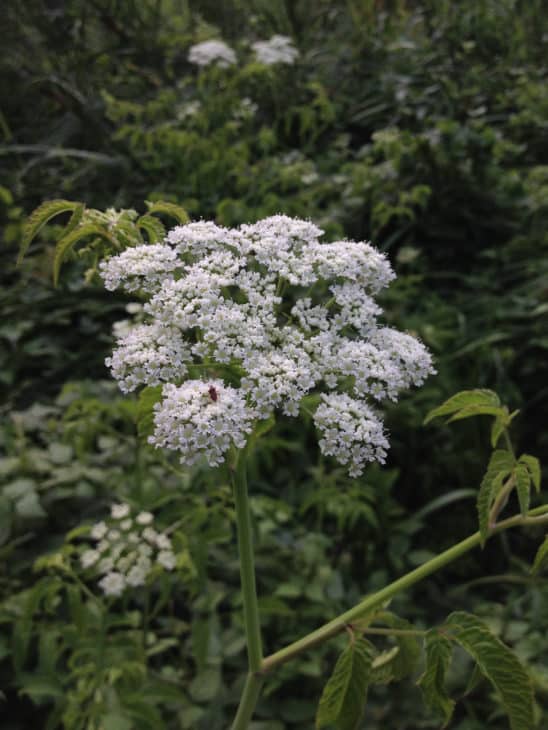
The water hemlock holds the infamous moniker of North America’s most poisonous plant. An alarming characteristic, given how easy it could be to mistake it for the elderberry. Water hemlock thrives only in wet environments and can even grow in water.
The greenish and fibrous stems hint that you should stay away from this plant. Every part of the plant is toxic when ingested. It starts slow in its first year and appears as a low-growing rosette, and only begins to mature in its second year, where it’ll develop a stalk that can grow up to 8 feet.
5. Phytolacca Americana
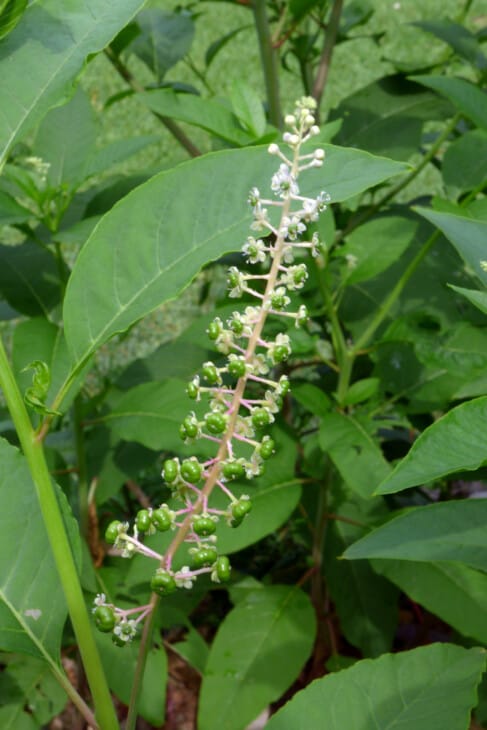
With its fleshy taproot that can grow to 12 inches long and a thickness of 4 inches, the American pokeweed doesn’t particularly look like any of the elder plants. But, it shares close enough resemblances to the elder plants that many people still mistake the two plants.
The common pokeweed fruits over a more extended period over a year with its dangerously alluring berries larger than the drupes from elderberries. Pokeweed grows 4-10 feet long and 3-5 feet wide. It’s not as toxic as the water hemlock, but it is still a poisonous plant that you should steer clear of.
6. Crataegus Aestivalis
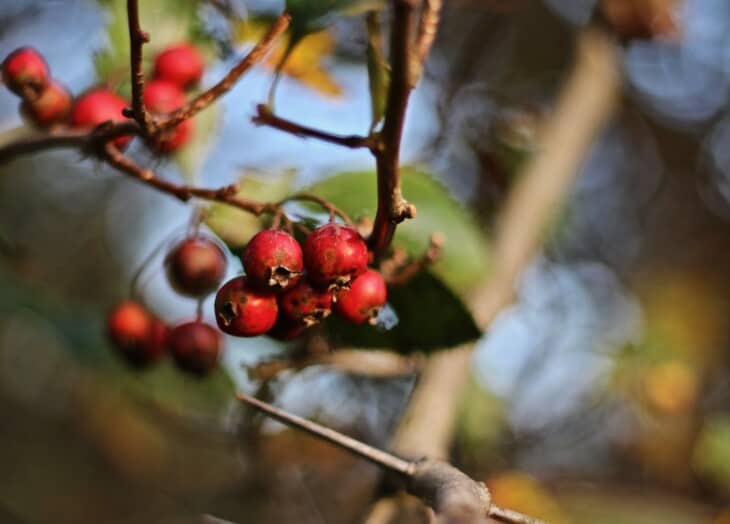
Apple hawthorn, mayhaw, or thornapples are a few names to refer to this native plant. Mayhaws belong to the rose family, and their white and star-shaped flowers and gray or silver can often be misjudged for an elderberry plant.
Thornapples grow much bigger than elders, to a towering height of 30 to 40 feet, but they grow slowly and can look like the elder when it is between 10 and 25 feet. Like elderberries, the sweet-tasting pome fruit is burgundy and ready for plucking in summer, making it understandable to confuse the roundish fruit with the elderberry fruit as they are about the same or slightly larger in size.
8. Heracleum Maximum
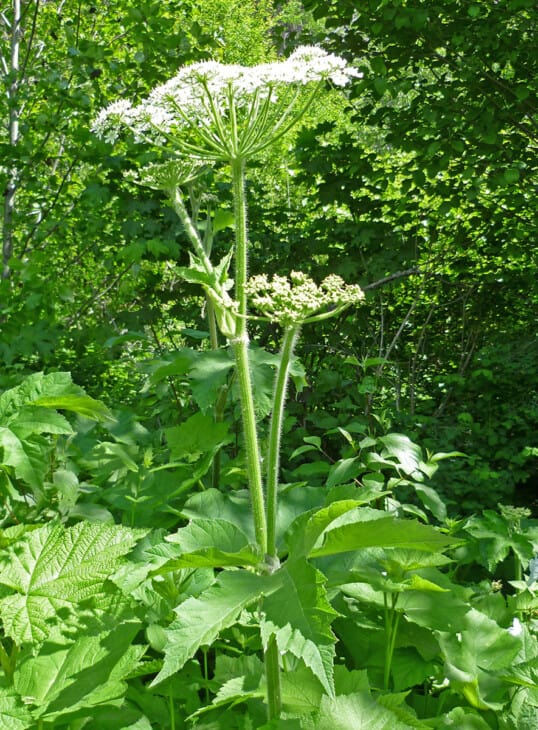
The American cow parsnip’s young stem is edible and eaten after peeling and cooking. True to its Indian celery or Indian rhubarb name, the plant reportedly tastes like celery. Green or purplish in color, the stem is hairy and has a strong and rank smell when you crush it, unlike the nonaromatic stem of the black elder.
This plant can become problematic for curious pets and children as its sap has poisonous characteristics, which can irritate the eyes when it makes contact with them. Luckily, this is one of the easiest mimics to make out, as it has large, serrated compound leaves.
9. Cornus Alternifolia
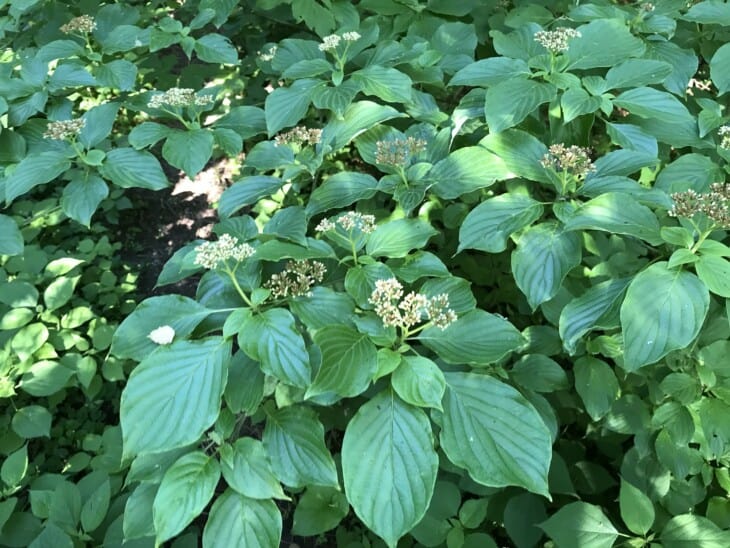
Alternate leaf dogwood shares many similarities with elders. Their blueish-black drupe fruits are similar in size to the elder plants and have a tart taste. The cross-shaped flowers also have a creamy-white hue, appear in clusters, and are fragrant like the flowers worn by elders.
Their 15 to 25 feet height should also be familiar to you, but these plants’ 20 to 32 feet width tends to be wider than that of many elderberries. The polished stem surface might also confuse untrained eyes, especially when the stem appears more green instead of its other lavender or reddish shade.
10. Eleutherococcus Sieboldianus
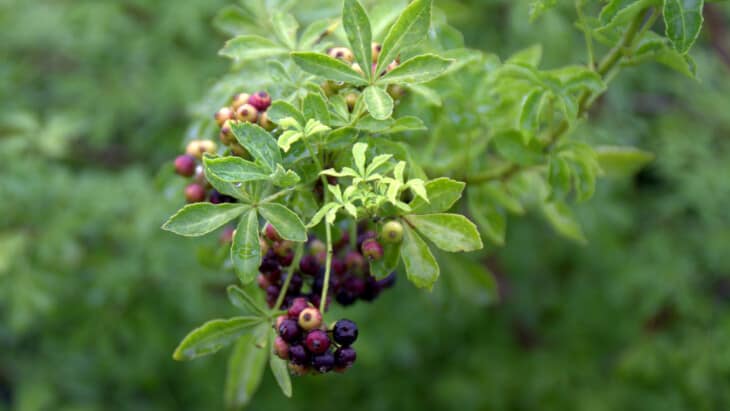
Five-fingered Aralia or Angelica shrub has an upright stem with leaves that collapse at the top, giving it the dome-shaped presentation of the elder plant’s flowers. The leaves don’t have hair and, with their 1 to 3-inch length, would appear quite close to those of elders if it weren’t for the leaflets of the compound leaves being a bit too individualized.
The Angelica shrub’s parts and black berry-type fruits aren’t considered poisonous to animals and young children. The fruits have a slightly sweet flavor that some people say reminds them of biting into fresh celery. The 6 to 10-inch length with an 8 to 10-inch girth is of similar dimensions to the American elder.
11. Conium Maculatum
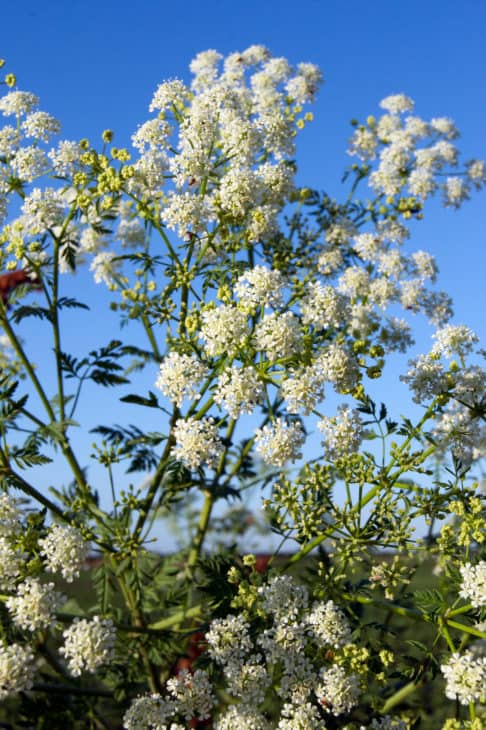
Not many people would mistake the Californian fern for an elder plant, but the cluster of small, 5-petal white flowers branching up from the stem looks a bit like a black elder. Unlike the black elder, the flowers congregate in an umbrella shape instead of being flat-topped, and in the middle of the white flowers of the Nebraska fern is one pink flower.
The plant also has other terrifying names like deadly hemlock, poison hemlock, poison parsley, and poison fool’s parsley; it is highly poisonous.

